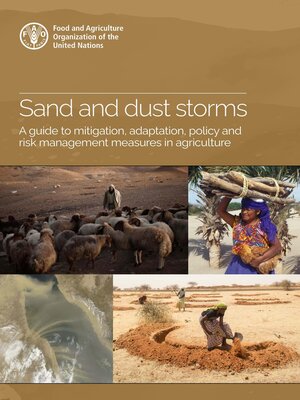Sand and Dust Storms
ebook ∣ A Guide to Mitigation, Adaptation, Policy and Risk Management Measures in Agriculture
By Food and Agriculture Organization of the United Nations

Sign up to save your library
With an OverDrive account, you can save your favorite libraries for at-a-glance information about availability. Find out more about OverDrive accounts.
Find this title in Libby, the library reading app by OverDrive.



Search for a digital library with this title
Title found at these libraries:
| Library Name | Distance |
|---|---|
| Loading... |
The yields and productivity of crops, trees, pastures and livestock are adversely affected by SDS. With climate change it is expected that droughts and land use changes will increase the frequency and risk of SDS. While agriculture is a major driver of SDS, agriculture is impacted by SDS and it is also part of the solution to combat SDS risks and mitigate their impacts. This guide aims to provide an overview of sand and dust storms and the impacts on agriculture and food systems. It gives a review of how agriculture can create SDS sources and highlights the impacts of SDS on agricultural production in source and deposition areas. It includes a range of high-impact, location- and context-specific practices to reduce SDS source and impacts on agriculture subsectors at local level, comprising technical and non-technical interventions. Moreover, it assesses how SDS risk is addressed at the policy level and discusses options for integrating SDS at national and regional levels into multi-hazard disaster risk reduction (DRR) and disaster risk management (DRM) strategies or sectoral development programmes, followed by conclusions and recommendations. Urgent action must be taken now. Short-term responses need to be linked to long-term development actions to enhance combating SDS. The adverse impacts of SDS are likely to become even more severe in the future, particularly due to climate change, unless appropriate interventions are made.







